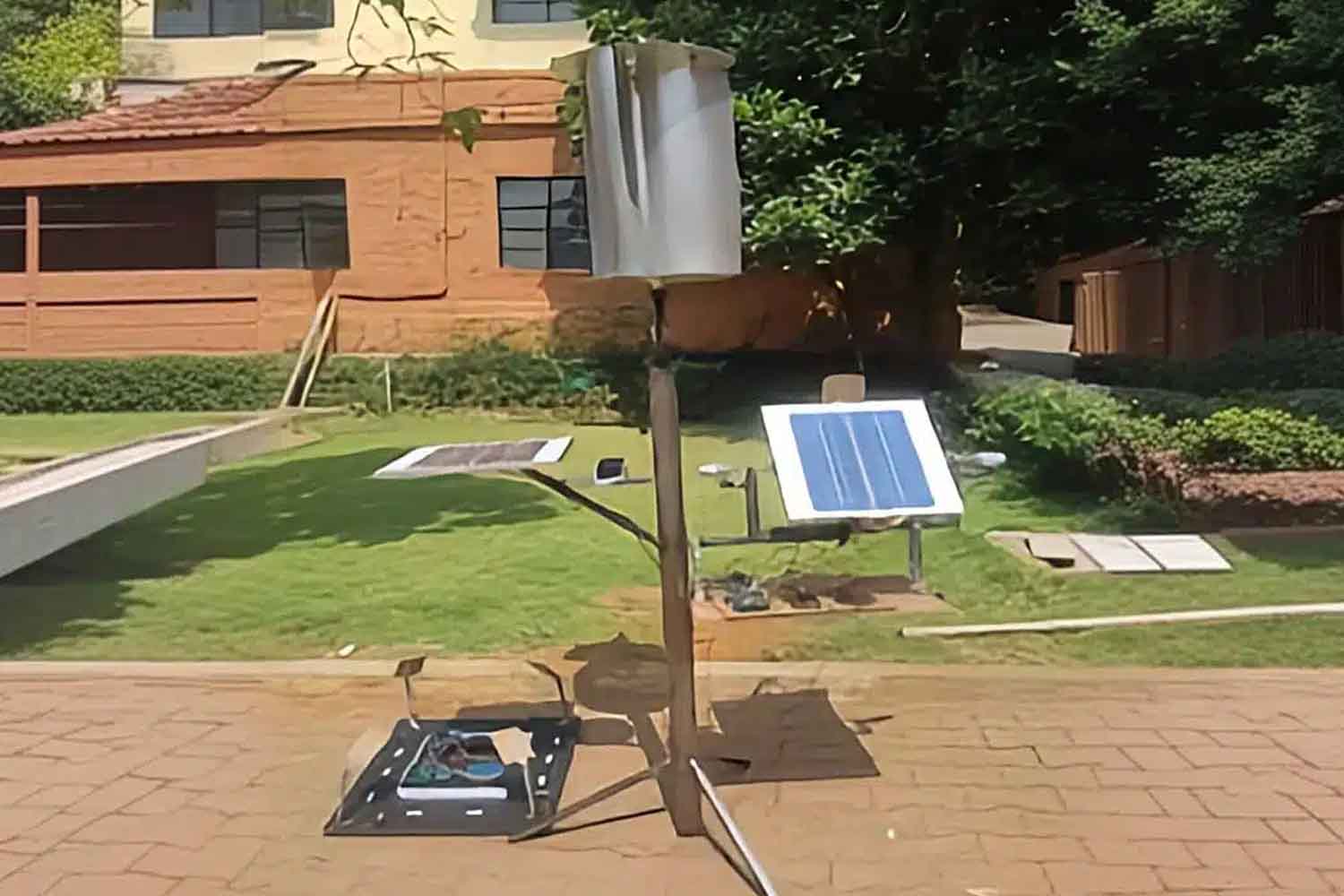A new technological tree imitates nature and produces clean energy thanks to solar panels, a turbine, and an intelligent solar tracking system

Table of contents
In the heart of India, a group of researchers has brought to life something that seems straight out of a science fiction story — but it’s all real, and above all, very green. It’s called the Wind-Solar Hybrid Tree (WSHT), and it’s a technological “tree” that produces clean energy by simultaneously harnessing the sun and wind, combining design, ingenuity, and sustainability in a single object.
This hybrid solar-wind tree was born from a collaboration between three important Indian institutes: the Dayananda Sagar College of Engineering, the Sri Venkateshwara College of Engineering, and the Nitte Meenakshi Institute of Technology. The goal? To offer a concrete and intelligent response to the growing demand for renewable energy, particularly in urban contexts and areas without access to the electrical grid.
How the WSHT works
The WSHT reproduces the shape of a tree, with a central trunk on which a wind turbine is mounted and “branches” that host photovoltaic panels. But the real distinctive feature lies in one of these panels: it’s mounted on a two-axis solar tracking system, capable of following the sun in real time, moving along two directions to capture every possible ray and transform it into energy.
Before building it, the team tested everything digitally using MATLAB/Simulink, software that allowed them to simulate the system’s behavior under real conditions. The model included:
- a fixed 100-watt solar panel,
- a panel with 2-axis solar tracking, also 100 watts,
- a 500-watt wind turbine.
To all this, they added a microcontroller connected to GPS data, a digital compass, and gyroscopic sensors, to help the panel follow the sun with maximum precision.
More energy with solar tracking and wind support
After the digital simulation, the tree was built and tested in the Bangalore area in India. The researchers wanted to measure energy yield at different times of the year, choosing four symbolic dates: January 5, May 5, September 5, and December 5.
The results are clear:
- The panel with the two-axis tracker produced an average of 144 Wh per day;
- The fixed one, without tracking, stopped at 109 Wh;
- The wind turbine, alone, generated about 300.5 Wh per day.
A clear difference, which demonstrates how much solar tracking can make a difference in photovoltaic energy production. All this data was published in the scientific journal Franklin Open.
An ideal solution for smart cities, public spaces, and isolated areas
The WSHT is much more than a simple generator: it’s an object that’s beautiful to look at and useful for the environment. With its nature-inspired shape, it can be installed in parks, urban centers, school courtyards, or off-grid residential areas, without impacting the landscape and actually enriching it.
According to its creators, the hybrid tree can power streetlights, electric car chargers, small appliances, or mobile devices, offering clean energy with low impact. A simple but powerful idea that could revolutionize the way we think about urban energy production.
In a world racing toward a sustainable future, this tree teaches us that imitating nature — and improving it with technology — is perhaps the right path to follow.
Source: sciencedirect.com
